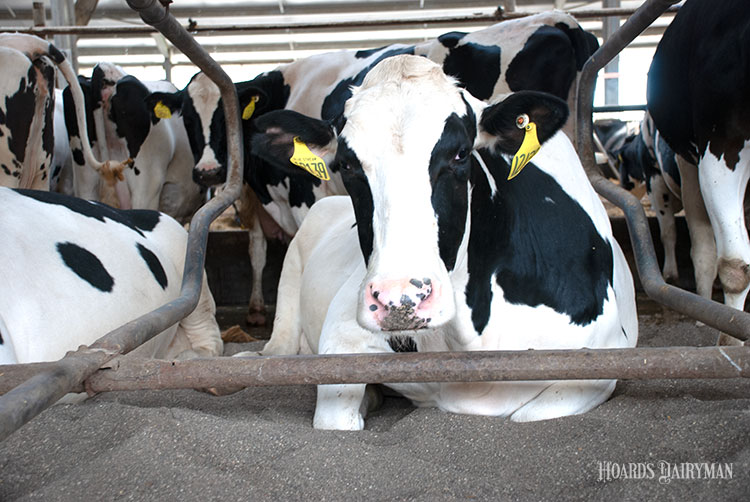
In the show "The Big Bang Theory," one of the main characters, Dr. Sheldon Cooper, has a very particular fondness for one location on the show’s main set, the characters’ living room. As the plot of the show describes it, he expertly maps out the living room to identify the best seat considering lighting, air flow, and room activity.
While dairy cows don’t physically calculate factors that make certain stalls and locations along the feedbunk more ideal than others, observations at the Miner Institute indicate some spots in the barns are considered more favorable than others in the opinion of the cows.
“There are a few research reports that suggest cows can prefer some stalls over others. In some studies, cows were more likely to be lying in stalls closest to the feed alley rather than stalls located at the back side of a pen,” explained Miner Institute’s Rick Grant in the October Miner Institute Farm Report.
Similarly, some research has indicated that cows prefer lying in stalls located near the end of a section of stalls. When it comes to feedbunk preferences, less research has been conducted, but time lapse cameras suggest cows prefer some areas over others.
“Cows, regardless of lameness status, also exhibited a strong preference for eating at feedbunk sections closest to the pen exit gate between about 6:00 a.m. and 9:00 p.m., but not at night,” Grant explained, detailing a recently completed trial at the Miner Institute.
This same trial found that lame cows preferred to use freestalls nearest to the pen exits.
Why does this matter?
While a cow’s favorite stall may seem like a minor and relatively unimportant part of the day when compared to the ration it consumes or the care it receives, both components of a cow’s day can be altered by pen preferences.
“At Miner Institute we’ve observed a 40% reduction in time spent ruminating in the stall when subordinate cows were lying in stalls preferred by dominant cows,” Grant explained.
“When we consider the impact that rumination has on rumen health and cow performance, that is truly something to ruminate on.”
Further, in the case of lame cows, consider the impact of a cow’s preferred freestall and how that might change if the animal is unwilling to walk to that location. It might also create competition at the most easily accessible locations for the cows.
Now think of the impact at the feedbunk. Early research indicates that if a cow’s preferred eating location is out of feed, that animal may not move down to a location that has more feed and instead skip eating altogether.
There are a number of likely consequences of cow location preferences, and more research is warranted. That makes Grant’s closing comments especially poignant.
“Assuming that all cows in a pen will use all resources within the pen uniformly is likely untrue. Our housing design and management routines of the future need to take this into account as we learn more to ensure adequate access to pen resources for all cows,” Grant concluded.








